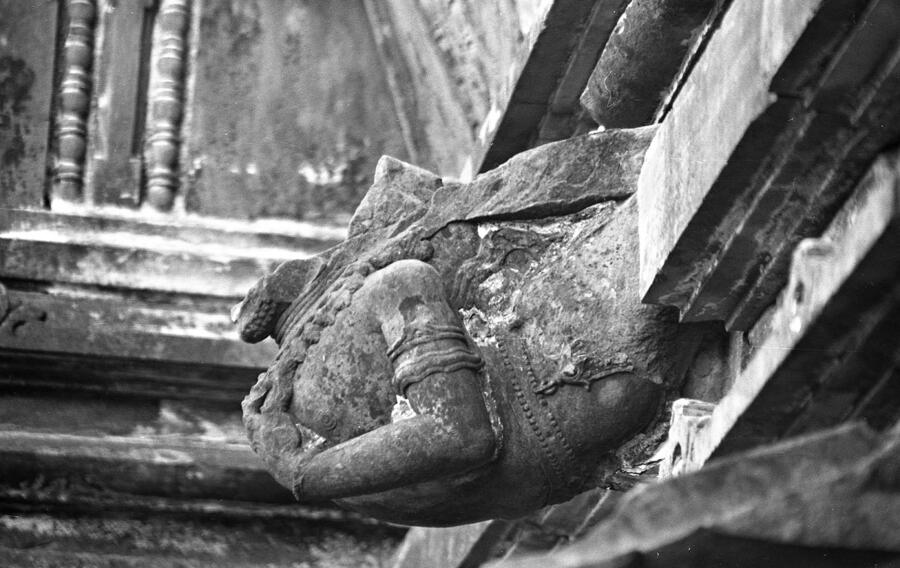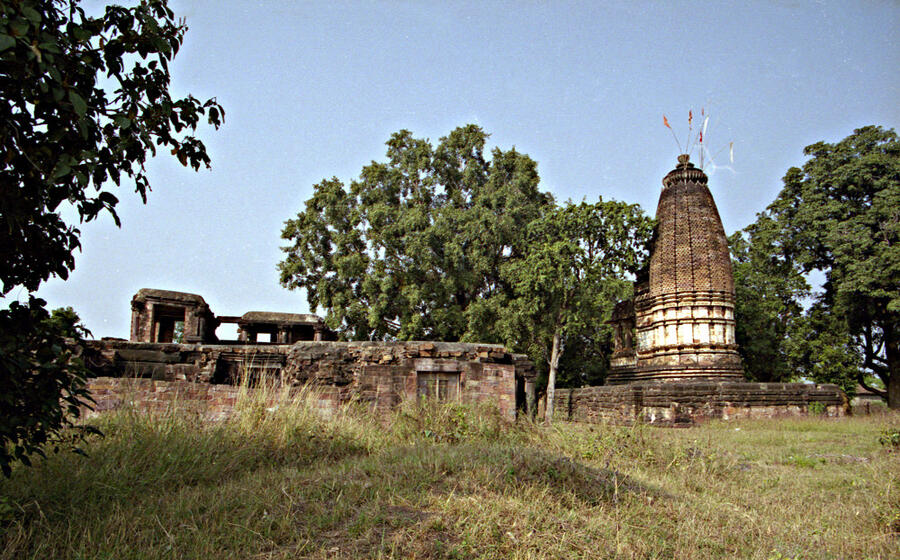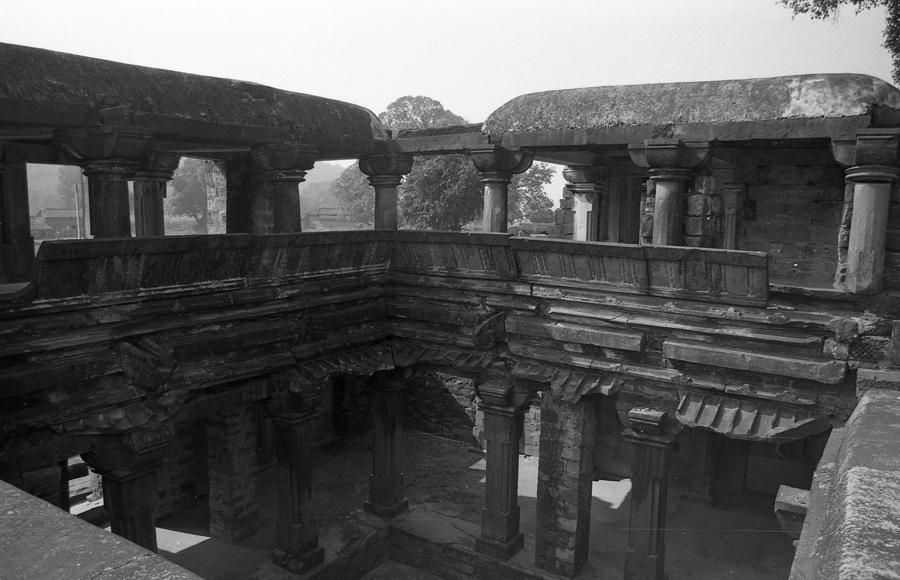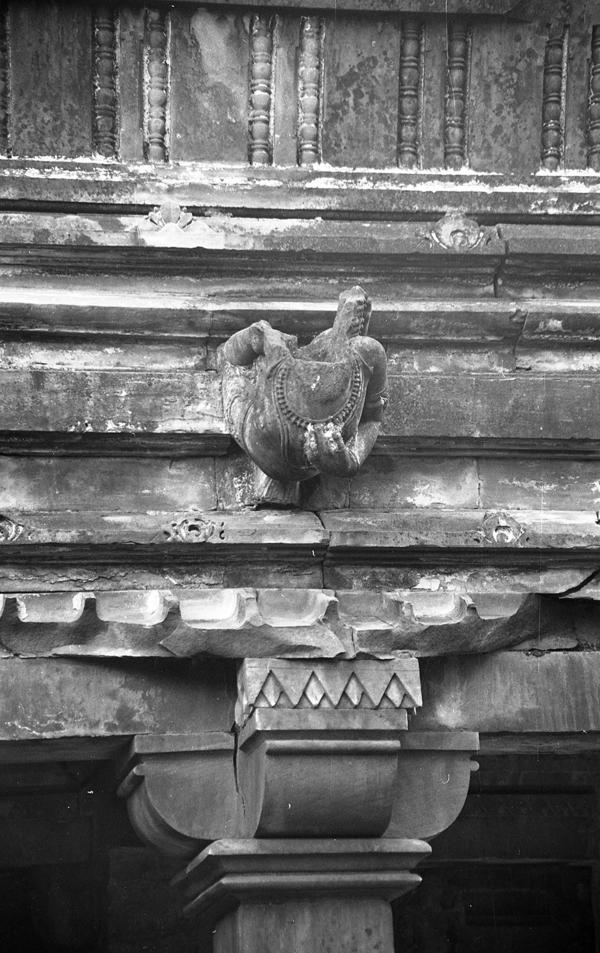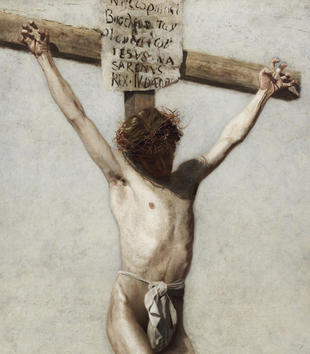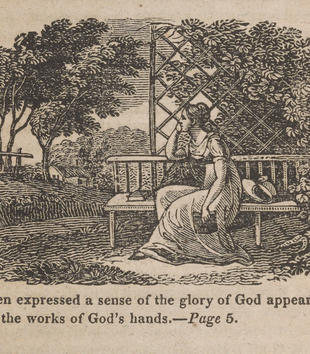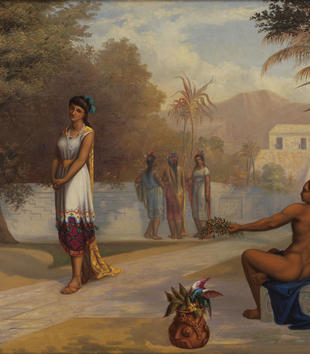Hovering above the central courtyard of a Hindu monastery at the rural central-Indian village of Chandrehe was once a set of finely sculpted flying celestials, known within their original, tenth-century context as gandharvas, heavenly singers in the court of the gods, or vidya-dharas, meaning "carriers of truth." Skillfully carved, they were endowed by their maker with both a fluidity of movement and an exquisite lightness that belied the massive materiality of the medium of stone. As individual figures, Chandrehe’s celestials were richly adorned with jeweled necklaces, flowing scarves, sacred threads, elaborate armlets, and beaded belts. Their bodies sloped downward and then swelled outward and upward in an elegant arc, as their bent legs and arms reinforced the potential for forward movement. As elements in an architectural context, they performed a crucial function within the larger building. Situated above the corrugated stone eave (chadya) surrounding the monastery’s first story, they were designed as drain-spouts to facilitate the flow of rainwater into the recessed court below. During the monsoon season, water would once have streamed through a channel carved along their backs and out through their mouths, creating an effervescent display not only spectacular as a vision but also melodious as a sound.
The music made by the falling rain may have been fundamental to the figures’ meaning. It would have resonated well with metaphors of heavenly song and falling water found in three verses of an inscription still affixed to the monastery’s entrance. In the first one, appearing early in the text, the fame of the resident guru, a Shaiva sage named Prabodhashiva who was also the monastery’s maker,1 is described as having been praised:2
. . . continuously with delight and in a high tone every Magha (month equivalent to mid-February or early March) by the gandharvas and vidyadharas in the assembly held in Indra’s celestial garden.3
In this case, the stone celestials may have actualized the literary metaphor, by making the singers permanently present within the guru’s home. In another verse, rain is more explicitly referenced as a metaphor for the deeply sensory atmosphere around the holy hermitage at night:
At night this hermitage (ashrama)—(which is wafted) with breezes, (which is made) very cool by the sprays of the water of the Sona (river), which makes the sky reverberate with loud roars of lions, and which has bee-like clouds hovering round mountain peaks—causes people to suspect lightning on account of the phosphorescent glow of the great medicinal plants (growing nearby).4
Here, rain is referenced through a range of human senses, including touch (the spray of river), sound (roars of lions), and sight (clouds, the glow of plants). Finally, the third verse turns more explicitly to the theme of falling water by evoking the story of the descent of the holy Ganges River from the heavens to the earth:
May this eulogy endure unchanged on this earth as long as the divine river (Ganga), meandering through the coiled matted hair of [Shiva], with its waters shattering on the surface of the rocks on the Himalayas, flows to (the sea), the lord of rivers, along the path (shown) by [the ascestic] Bhagiratha, sanctifying the earth with its bounding waves.6
This verse, expressed as a benediction in the vocative at the inscription’s end, had the additional effect of transforming the third-person narrative into a wish made present in the real world.
Chandrehe’s celestials ultimately represent the potential for sculptural objects to work across media, in the process forging new relationships between literary, visual, and sensory worlds. The text of the inscription would have woven the idea of the sound of perpetual singing and falling water into the façade of the building. The sound was symbolized through the imagery associated with singing celestials, and actualized every summer by the high tones of their trickling "voices." The positioning of the figures within the central courtyard may have had a similarly transformative effect on the meaning of the space within the monastery, the abode of the holy guru, who, like the mythic sage Bhagiratha, represented the potential to bridge the heavens and the earth.7
Today Chandrehe’s original vidya-dharas are represented only by a few broken pieces still remaining in situ and a single, fully-preserved figure currently housed in the collection of the Virginia Museum of Fine Arts. Although fragmented and scattered across continents, these heavenly figures remain as indices of a deeply sensory religious world; they also attest to the power of stone sculpture to animate and transform architectural spaces through both vision and sound.
